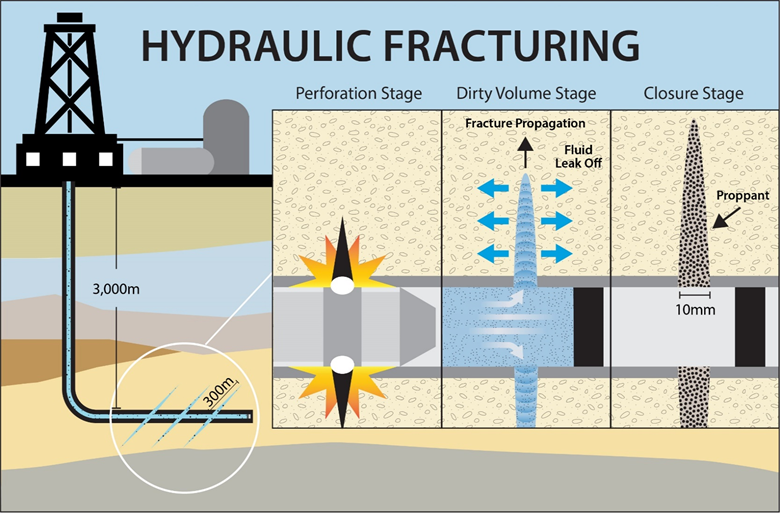 In hydraulic fracturing, the proppant-filled fracture at the end of pumping strongly influences the fluid conductivity of natural oil and gas. Therefore, it is very important to create optimal propped fracture geometry by designing pumping schedules to increase the recovery of shale hydrocarbon. Currently, the pumping schedule is designed offline and applied to a hydraulic fracturing process in an open-loop manner, which may lead to poor process performance if there are large disturbances and plant-model mismatches. Furthermore, the propped fracture geometry depends on the interaction between simultaneously propagating multiple fractures (stress-shadow effects) and the interaction between propagating hydraulic fractures and pre-existing natural fractures in naturally fractured unconventional reservoirs. Motivated by this, first, we focus on developing a high-fidelity process model of hydraulic fracturing processes to understand these interactions. Then, we develop a model predictive control framework for the design of pumping schedules to achieve optimal propped fracture geometry in unconventional reservoirs, which is directly related to the overall efficiency of the operation.
In hydraulic fracturing, the proppant-filled fracture at the end of pumping strongly influences the fluid conductivity of natural oil and gas. Therefore, it is very important to create optimal propped fracture geometry by designing pumping schedules to increase the recovery of shale hydrocarbon. Currently, the pumping schedule is designed offline and applied to a hydraulic fracturing process in an open-loop manner, which may lead to poor process performance if there are large disturbances and plant-model mismatches. Furthermore, the propped fracture geometry depends on the interaction between simultaneously propagating multiple fractures (stress-shadow effects) and the interaction between propagating hydraulic fractures and pre-existing natural fractures in naturally fractured unconventional reservoirs. Motivated by this, first, we focus on developing a high-fidelity process model of hydraulic fracturing processes to understand these interactions. Then, we develop a model predictive control framework for the design of pumping schedules to achieve optimal propped fracture geometry in unconventional reservoirs, which is directly related to the overall efficiency of the operation.
Literature:
P. Siddhamshetty, K. Wu and J. S. Kwon, “Optimization of simultaneously propagating multiple fractures in hydraulic fracturing to achieve uniform growth using data-based model reduction,” Chem. Eng. Res. & Des., 2018, 136, 675-686. DOI: 10.1016/j.cherd.2018.06.015
P. Siddhamshetty, S. Liu, P. P. Valkó and J. S. Kwon, “Feedback control of proppant bank heights during hydraulic fracturing for enahnced productivity in shale formations,” AIChE J., 2018, 64,1638-1650 DOI: 10.1002/aic.16031
P. Siddhamshetty, S. Yang and J. S. Kwon, “Modeling of hydraulic fracturing and designing of online pumping schedules to achieve uniform proppant concentration in conventional reservoirs,” Comp. & Chem. Eng., 2018, 114, 306-317. DOI: 10.1016/j.compchemeng.2017.10.032
